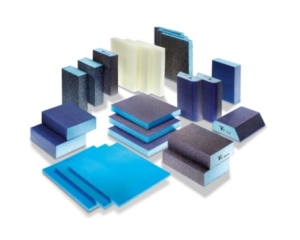“Bona Bits”
Application Problems When Finishing Floors
Slow Drying. Most finishes dry slowly during perioids of high humididty (over 70%) and/or temperatures below 15C. Working in totally enclosed areas keeps solvents or water contained and will cause slow drying in solvent-based finishes and slow drying plus severe grain raising in water-based finishes. Increasing heat or air circulation helps in these situations.
Fast Drying. Most finishes will dry too fast in high temperatures (over 27C) and humidity below 30% or when air flows directly across the surface. Fast drying can cause brush, roller, or applicator marks because the finishing material will not have time to flow and level. As a preventative measure, turn on air conditioning to cool the area to about 27C or less, and then turn off before finishing, Apply finish early in the day, and keep sunlight off the floor (cover windows).
Wrinkling, Alligatoring, or Blistering. These can result from bottom coats not dry enough to accept a second coat, or a top coat solvents eating into weaker or uncured bottom coats. Wrinkling will result as blisters covering a large area of the floor, while alligatoring is very heavy wrinkling resulting when the top coat not only eats into the bottom coat, but actually lifts it from the wood or the floor stain. Prevention requires that stains and seal coats penetrate and adhere, and that all coats have sufficient air circulation and time to thoroughly dry.
Orange Peeling. The finish resembles the skin of an orange, resulting from the top coat setting too fast on the surface while taking longer to cure beneath. As the bottom dries very slowly, the finish surface begins to dimple from the shrinkage. Keeping air flow off a wet surface can prevent this, but it can also be caused by a cold floor.
Bubbles and Craters. These can by caused by air, solvents, or water coming through the surface after the finish has started to set, evidence of too-fast dry time. Bubbles are caused by air or solvent passing through the film; sometimes they cause pinholes when they burst, Craters are ridges left when bubbles break, and the surface finish does not lay back down. Prevention involves adjustment of temperature and air flow, allowing sufficient drying time for solvent release.
Separation of finishes in Spots or Along Cracks. Bare spots are evident. They come from contamination (wax of oils usually) on the surface and/or in between the cracks, and this contamination makes the finish crawl away. Wiping spots with lacquer thinner and recoating is often the solution. Delamination is evidenced by coats of finish separating from each other. This can be the result of failure to abrade between coats or the presence of contaminants such as wax that were not fully removed before applying the finish.
August 2012



